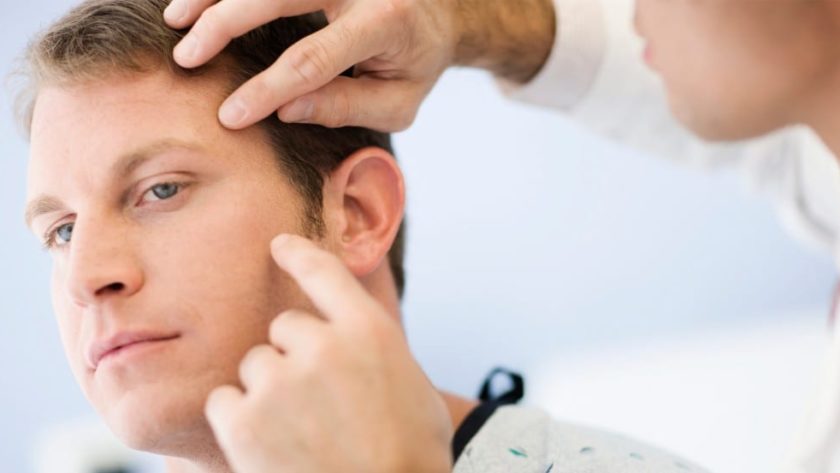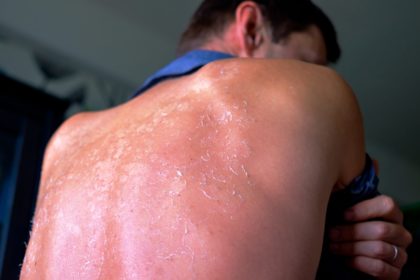Two weeks ago I had a biopsy and yesterday I found out I have cancer. Not pre-cancer… the real deal. Basal cell carcinoma. I’ve learned it’s one of the most common types of skin cancer, but knowing that I now join 2.2 million other Americans diagnosed each year doesn’t make my diagnosis any less daunting or serious. I’m still dazed in disbelief. It’s not because I’m not a likely candidate. I admit it, I am. I grew up in the sun. As an active athletic kid, staying indoors was not an option. I can still hear my mom’s repeated warnings at the sight of my golden tan or raging sunburn, “You better stay out of the sun. You’ll get freckles. Worse yet, you’ll get skin cancer.” Well, once again, Mom was right.
As a youngster and young adult in my 20’s, I spent my summers on the tennis courts, by the pool, or on a boat or bike. Winters didn’t keep me from being a UV target either. I lived on the mountain and skied competitively, so in reality, I clocked in thousands of hours under the sun on the glorious slopes of Lake Tahoe.
What actually shocks me about the cancer diagnosis is the benign nature of the tumor. I’ve read the rules for skin cancer and examined the well publicized graphic photos, but my lesion doesn’t resemble any of the textbook examples. There is NO discoloration. It’s not brown, black or red. In fact, my doctor described it as “translucent”.
It’s one of those things I noticed while putting on my makeup some time ago. I casually thought about getting this small ‘bump’ removed someday, but considered such action as purely cosmetic and neither a big deal or urgent. However, during a routine head-to-toe skin cancer exam, my dermatologist regarded the bump as suspicious.
What Is Basal Cell Carcinoma?
Cancer of the skin is the most common of all types of cancer and include basal cell carcinoma (BCC), squamous cell carcinoma (SCC), and melanoma. Basal cell carcinoma accounts for 8 out of 10 skin cancers and usually develops on areas exposed to the sun, such as the head, face and neck, but they can occur anywhere. It affects people of all ages.
This type of cancer tends to grow slowly and it’s very rare for basal cell carcinoma to spread to nearby lymph nodes or to distant parts of the body. Nevertheless, because it can invade and cause significant destruction of surrounding tissues and bone beneath the skin, it is still considered malignant. Over fifty percent of the people diagnosed with one basal cell cancer will develop a new skin cancer within five years.
Treatment
I’m scheduled for surgery a month from now — not my choice, but I couldn’t get in any earlier. My doctor will be using the Mohs technique, a complex microscopically-controlled surgery also known as chemosurgery. It was named after the general surgeon who invented it, Frederick E. Mohs. In this technique, the surgeon removes a very thin layer of the skin (including the tumor). The surgeon/pathologist maps, freezes and cuts the tissue, then examines the sample under a microscope. If cancer cells are still present, the next layer is removed and examined. This is repeated until the skin samples are free of cancer cells.
The process is very precise, time-consuming, and expensive, but it’s one way to obtain complete margin control and a high cure rate (between 97% and 99.8%). I was warned it may take several hours to complete, but it means more normal skin near the tumor can be saved which will create a better outcome after the surgery. One of the advantages of Mohs surgery is that I’ll know my results right away and all the cancer will be removed at the time of my surgery.
Prevention
I’m sharing my story, so you don’t repeat my mistake. Don’t brush off any changes on your skin as “nothing”. Protect yourself and your kids.
1. Limit ultraviolet (UV) exposure. UVA rays age cells and can damage cells’ DNA. UVB rays can directly damage DNA and are a more potent cause of sunburns and skin cancer. To protect yourself, follow the “Slip, Slop, Slap, and Wrap” catch phrase.
• Slip on a shirt. Dark or bright colors (e.g., red, black, navy blue) absorb more UV rays than lighter colors (e.g., whites, yellow, and pastels). Tightly woven fabric also provides more protection. Dry fabric is generally more protective than wet fabric.
• Slop on sunscreen. Use sunscreen and lip balms with sun protection factor (SPF) values of 30 or higher. A palmful of sunscreen (about 1 ounce) is recommended to cover the arms, legs, neck, and face of an average adult. Remember to reapply if you sweat, swim or towel off.
• Slap on a hat. Your hat should have at least a 2- to 3-inch brim all around and be made of tightly woven fabric. A baseball cap can only protect the front and top of your head and not the very vulnerable areas of your neck and ears.
• Wrap on sunglasses to protect the eyes and sensitive skin around them. Wear wrap-around sunglasses with at least 99% UV absorption.
NOTE: UV rays can come through light clouds, can reflect off water, sand, concrete, and snow, and can reach below the water’s surface.
2. Seek shade. This is especially important when UV light is strongest: between 10 a.m. and 4 p.m.
3. Avoid tanning beds and sunlamps. Tanning lamps are not harmless. They give out UVA and usually UVB rays as well which can both cause long-term skin damage and skin cancer.
4. Avoid harmful chemicals. Exposure to certain chemicals, such as arsenic, can increase your risk of skin cancer. Arsenic is a heavy metal found naturally in well water in some areas, pesticides and herbicides, some medications, herbal remedies, and in certain occupations (miners, sheep shearers, and farmers). Hydrocarbons in tar, oils, and soot may cause squamous cell carcinoma.
5. Be extra cautious if you’re a man. Men are about twice as likely as women to have basal cell cancers which can be attributed to higher levels of sun exposure.
6. Get your daily dose of vitamin D from your diet. Recent research has found that vitamin D has many health benefits. It’s made naturally in the body when UV rays from sunlight strike the skin and is the primary source of vitamin D for the majority of people, other than supplements. Fatty fish (i.e., salmon, tuna, and mackerel) and fortified foods (i.e., milk, ready-to-eat breakfast cereals, orange juice, and yogurt) provide most of the vitamin D in the American diet.
7. Check your skin regularly. There is evidence that skin cancer deaths could be lowered by as much as 63 percent if people performed monthly self-exams. Have a dermatologist do a full-body exam first to assure that your existing spots, freckles, or moles are normal or treat any that may not be.
I’m still waiting for the diagnosis on another lesion that was sent to UCSF for a second opinion. So with that said, be diligent and cautious. A small investment of time can make all the difference.
![]() Karen’s Fit Tip: When outdoors, use the “shadow test”. If your shadow is shorter than you are, the sun’s rays are the strongest, and it’s even more important to protect yourself.
Karen’s Fit Tip: When outdoors, use the “shadow test”. If your shadow is shorter than you are, the sun’s rays are the strongest, and it’s even more important to protect yourself.



